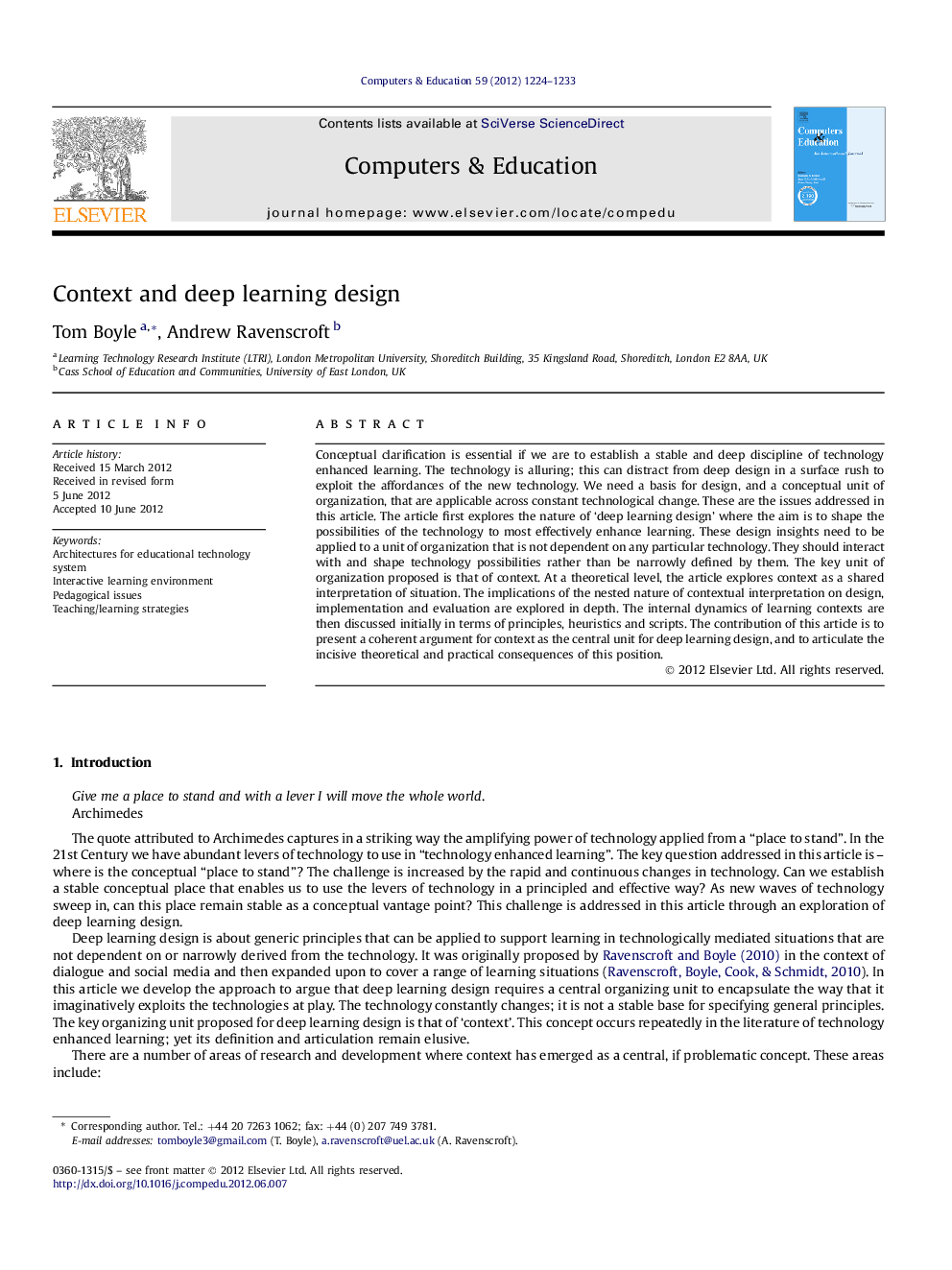| Article ID | Journal | Published Year | Pages | File Type |
|---|---|---|---|---|
| 348664 | Computers & Education | 2012 | 10 Pages |
Conceptual clarification is essential if we are to establish a stable and deep discipline of technology enhanced learning. The technology is alluring; this can distract from deep design in a surface rush to exploit the affordances of the new technology. We need a basis for design, and a conceptual unit of organization, that are applicable across constant technological change. These are the issues addressed in this article. The article first explores the nature of ‘deep learning design’ where the aim is to shape the possibilities of the technology to most effectively enhance learning. These design insights need to be applied to a unit of organization that is not dependent on any particular technology. They should interact with and shape technology possibilities rather than be narrowly defined by them. The key unit of organization proposed is that of context. At a theoretical level, the article explores context as a shared interpretation of situation. The implications of the nested nature of contextual interpretation on design, implementation and evaluation are explored in depth. The internal dynamics of learning contexts are then discussed initially in terms of principles, heuristics and scripts. The contribution of this article is to present a coherent argument for context as the central unit for deep learning design, and to articulate the incisive theoretical and practical consequences of this position.
► The paper aims at conceptual clarification relating context and deep learning design. ► The article first explores the nature of ‘deep learning design’. ► Context is proposed as the key unit of organization for deep learning design. ► Learning contexts are articulated in terms of principles, heuristics and scripts. ► The impact of the nested nature of contexts on learning design is explored in depth.
